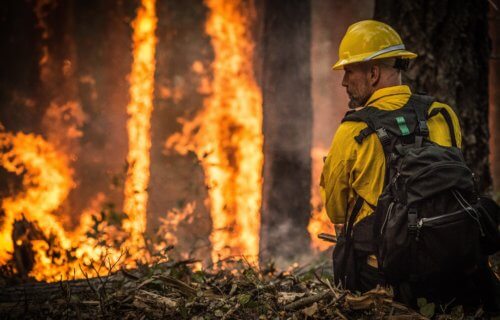ATHENS, Ga. — Devastating and consistently-worsening wildfires across the west coast of the United States have captivated the nation’s attention in recent years. Now, researchers from the University of Georgia report that more and more U.S. households are falling into the “high risk” categories for wildfire damage. What’s driving this increase? Study authors say it’s likely a combination of factors including climate change, drought, and the construction of more neighborhoods on the outskirts of cities and towns.
Additionally, the research team warns these developments may end up impacting the poor more than anyone else. They believe the increased wildfire risk will result in serious financial burdens to lower-income households unless society addresses the issue.
“We are learning about a growing number of people in the United States who have had their homeowner’s insurance cancelled because they live in wildfire prone areas, leaving homeowners to shoulder the costs for fireproofing,” says study author Matthew Auer, dean of the University of Georgia’s School of Public and International Affairs and professor of public administration and policy, in a media release. “There are many mitigation strategies that could lower risks, but they are often out of reach for low-income households.”
How can the nation put out the wildfire threat?
Auer recommends the creation of various multi-scale networks that involve individual homeowners, neighborhood groups, local, state, and federal government agencies, and non-governmental organizations all working together. In his opinion, this approach is the only viable answer.
Such networks could create Community Wildfire Protection Plans (CWPPs) capable of raising funds, providing educational resources, assisting with fire-resistant home construction and landscaping, and putting together “clean up days” aimed at the removal of excess vegetation around homes.
“We actually have the tools to help mitigate risks from destructive wildfires, but we have to make sure that they are accessible to whole communities,” Auer adds.
The CWPP in Boulder, Colorado is a great example of what a community can achieve when it works together, he notes. Federal, state, county and local entities developed the Boulder CWPP, along with assistance from technical experts and a citizen advisory team.
CWPPs are so helpful because they help ensure that small towns and communities have access to the same resources afforded to larger areas. Unfortunately, according to the U.S. Fire Administration, less than 10 percent of communities classified as at risk for wildfires have created a CWPP.
“A program that works in one area may not work elsewhere. CWPPs can be adapted to very different kinds of local conditions, but the essential first step is getting everyone to agree that a plan is needed in the first place,” Auer says.
Wildfires are worse than ever before
As much as we would all love for this problem to solve itself, that just isn’t the reality of the situation. 2020 represented the second highest year since 1960 in terms of total acres burned per annum by wildfire. Moreover, there are only three years on record in which wildfires burned at least 10 million or more acres per annum. All three have occurred since 2014.
More and more homes are also being built in areas with lots of trees and other vegetation over the past decade or so. Notably, an even further increase in this trend was observed just last year, probably due to more people working remotely from home.
“All of the probabilistic forecasts say that this is the future,” Auer concludes. “We have to get serious about wildfire risks in rural areas that don’t get much attention and recognize the large numbers of at-risk households that can’t fend for themselves.”
The findings appear in the journal Sustainability Science.
